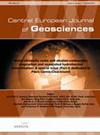预防性考古学的预测模型:概述和案例研究
引用次数: 41
摘要
利用地理信息系统和空间分析技术建立预测模型是预防性考古学的一个重要课题。这两种工具都在支持决策系统(SDS)中发挥重要作用,用于考古研究和提供有用的信息,以减少考古风险。多年来,已经开发和提出了许多GIS环境下的预测模型。现有的模型在执行分析所用的方法方法和参数方面存在本质上的差异。到目前为止,考虑空间自相关的研究很少,而空间自相关能提供更有效的结果。本文简要回顾了现有的预测模型,然后提出了一种新的方法方法,应用于意大利南部Apulian Tavoliere的新石器时代遗址,该方法将传统技术与允许我们包括空间自相关分析的方法相结合,以考虑不同遗址之间的空间关系。本文章由计算机程序翻译,如有差异,请以英文原文为准。
Predictive modeling for preventive Archaeology: overview and case study
The use of GIS and Spatial Analysis for predictive models is an important topic in preventive archaeology. Both of these tools play an important role in the Support Decision System (SDS) for archaeological research and for providing information useful to reduce archaeological risk. Over the years, a number of predictive models in the GIS environment have been developed and proposed. The existing models substantially differ from each other in methodological approaches and parameters used for performing the analysis. Until now, only few works consider spatial autocorrelation, which can provide more effective results. This paper provides a brief review of the existing predictive models, and then proposes a new methodological approach, applied to the neolithic sites in the Apulian Tavoliere (Southern Italy), that combines traditional techniques with methods that allow us to include spatial autocorrelation analysis to take into account the spatial relationships among the diverse sites.
求助全文
通过发布文献求助,成功后即可免费获取论文全文。
去求助
来源期刊

Central European Journal of Geosciences
GEOSCIENCES, MULTIDISCIPLINARY-
自引率
0.00%
发文量
0
审稿时长
>12 weeks
 求助内容:
求助内容: 应助结果提醒方式:
应助结果提醒方式:


